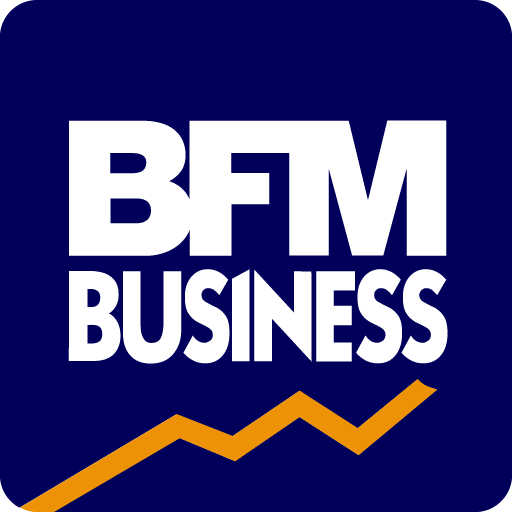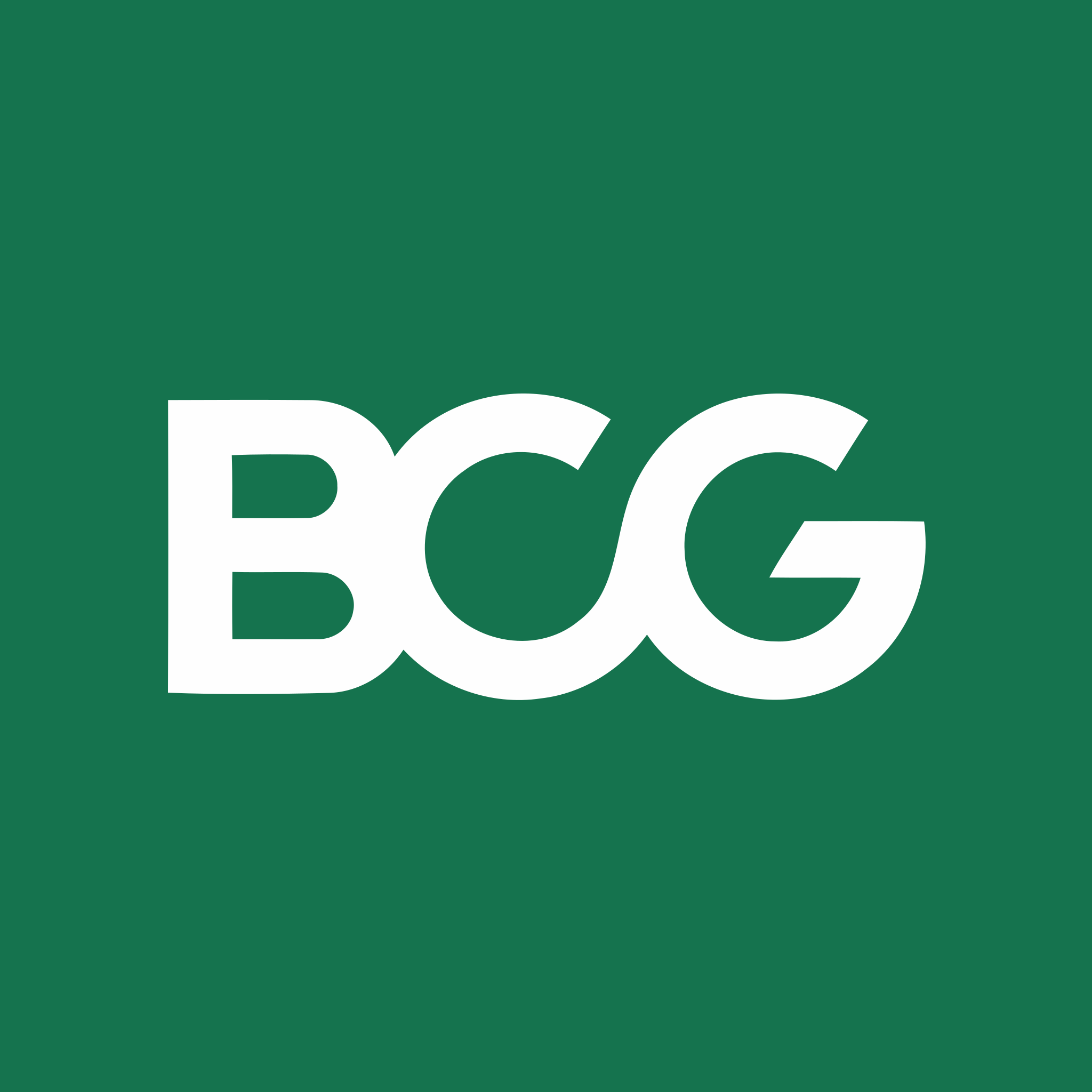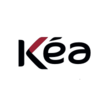Summary of our market study
As of 2020, the global beer market has been confronting mixed trends. Despite a projected growth from an estimated value of $593 billion in 2017 to $646.24 billion in 2025, with a CAGR of 1.8%, the industry is being reshaped by factors such as premiumization, health consciousness, and evolving consumer preferences. In the UK, beer holds a significant position, being the second most consumed alcoholic beverage after wine. However, British beer consumption has shown a decline, with total annual beer sales dropping 20% from 2006 to 2019. The craft beer segment has shown promise, with a growing interest from consumers in trial and sophistication, leading to a CAGR of 14.2% in on-trade sales volume between 2015 and 2019. Despite the adverse effects of the COVID-19 pandemic on the industry, with a significant decrease in sales during lockdowns, the market has seen resilience in off-trade sales. Trade analysis reveals that the UK imports slightly more beer than it exports, with a coverage rate of 96%, indicating a well-balanced trade scenario. The UK's production levels remain stable, ranking as the 9th largest beer producer globally in 2019, and the domestic industry employs a significant number of individuals, particularly in the hospitality sector. Overall, the market dynamics are influenced by a combination of traditional consumption patterns and new trends like premiumization, health awareness, and a robust craft beer movement..Shifting Tides in the UK Beer Market: A Focus on Health, Premiumization, and Craft Evolution The UK beer market has been undergoing significant changes reflecting a shift in consumer preferences towards health consciousness, premium quality, and diversity in taste. Despite the historical dominance of well-recognized brands like Carlsberg, Corona, and Heineken, and the preeminence of Guinness in the UK, the market has been evolving. Traditional beer consumption is decreasing overall, with an average Brit consuming between 60 and 80 liters of beer annually in recent years, a decline from previous levels. However, the market for beer in the UK is far from stagnant. It is reshaping itself, as exemplified by the surge in craft beer popularity. The demand for various beer types such as white, blond, red or amber, and dark beers is diversifying, and UK consumers are becoming more adventurous, with roughly 80 to 90 percent open to trying new and innovative beer flavors. The craft beer sector, which experienced significant growth with on-trade sales volumes increasing annually by over 10 percent from 2015 to 2019, demonstrates the shifting consumption dynamics. Consumer spending habits have revealed an interesting pattern of premiumization, where individuals are opting to spend more on lesser quantities. Craft beer has been a primary beneficiary of this trend, drawing in approximately 5 to 10 million drinkers in the UK, testament to the sector's rising allure. The premiumization movement is illustrated by the escalation in beer sales value, which, despite a decline in volume, saw consumer spending on beer in the UK reach nearly GBP 5 to 6 billion. Health trends have also left an indelible mark on the UK beer market. Driven by a general decline in alcohol consumption, sales of low or non-alcoholic beer saw a substantial increase of around 50 to 70 percent within a couple of years. The quest for healthier options has not compromised taste, as consumers expect alcohol-free beers to offer a flavor experience comparable to their alcoholic counterparts. Another notable trend is the factor of convenience, with nearly half of younger drinkers preferring chilled beers. A packaging shift towards cans, now encompassing over 70 percent of the beer sales, suggests a move towards more sustainable and recyclable options favored by consumers. From an industry perspective, the UK has remained steadfast as one of the top beer producers globally, ranked among the top ten with a stable output since 2012. Despite this, the number of breweries and related employment has hit a plateau due to market saturation and.### Key Market Players in the Global Beer Industry When discussing the beer industry, it is impossible to overlook the influence of some major international players that have shaped and continue to shape the global market. These titans of the brewing world not only dominate production and sales but also actively influence consumer trends and industry innovations. **AB InBev**: Formally known as Anheuser-Busch InBev, this Belgium-based company is a true giant in the beer market. The result of multiple mergers and acquisitions, AB InBev boasts a vast portfolio of over 500 beer brands, including well-known names like Budweiser, Corona, and Stella Artois. **Heineken**: Originating from The Netherlands, Heineken enjoys global recognition with its green bottles and red star logo. As one of the world's leading brewing companies, Heineken's international presence is strong, and it continues to grow through strategic investments and an expanding assortment of products that cater to a diverse consumer base. **CR Snow**: A name that might not be as familiar to Western drinkers, CR Snow is a key player in the Chinese market, which is a significant beer-consuming region. This company has gained a reputation for producing Snow beer, which has become the best-selling beer brand on the planet thanks to its massive popularity in China. **Scottish & Newcastle**: As the UK's largest and historically significant brewery, Scottish & Newcastle has maintained a strong presence through popular brands like Foster's. Its production sites in Manchester, Reading, and Tadcaster are a testament to the brewery's commitment to the UK market and its cultural heritage. **Craft Breweries**: The emergence of craft breweries is transforming the beer landscape by providing consumers with a plethora of niche and local options. These small, independent breweries pride themselves on creating unique flavors that appeal to consumers' growing taste for authenticity and quality over quantity. Craft beer's popularity is driving growth in the beer industry and underscoring a trend toward premiumization. **BrewDog**: Hailing from Scotland, BrewDog is a prime example of the craft beer revolution. With a strong emphasis on branding and a vast array of innovative brews, BrewDog has not only captured the hearts of UK beer aficionados but also made substantial inroads into international markets. These major players represent a diverse array of business models and strategies that underline the complexity of the global beer market. From multinational giants to local craft brewers, each has had a significant impact on the industry and continues to navigate the changing landscape of consumer preferences and market
to understand this market
Detailed content of our market study
 Inforamtion
Inforamtion
- Number of pages : 35 pages
- Format : Digital and PDF versions
- Last update :
 Summary and extracts
Summary and extracts
1 Market summary
1.1 Definition and scope of the study
Beer is mainly produced from barley malt with sometimes other cereals as a supplement. It is one of the most popular alcoholic beverages in the world.
Beer can be consumed in bottles, cans or through kegs. Among the most popular kind of beers we find:
- White beers: brewed with wheat and pale malts.
- Blond beers: brewed with pale barley malts.
- Red beers or amber: brewed with more roasted barley malts.
- Dark beers: brewed with extremely roasted brown malts.
The world beer market is dominated by some major international players (AbinBev, Heineken, CR Snow). The rest of the market is composed of a very large number of independent local actors. Going forward, the market is expected to expand as consumer spend more money on beer. Meanwhile, overall consumption is decreasing in general.
In 2017, the average Brit drank 69.5 liters of beer per year. [British Beer and Pub Association] Moreover, in 2018 the average household spent £8.70 per week on beer at home, and £8.00 per week on beer outside of home. [drinkaware] Finally, beer remains the second choice of alcoholic beverage after wine, although its market share has decreased over the past years.
Widely recognized brands include Carlsberg, Corona, Heineken, Bud Light, and Budweiser. Guinness is the most popular brand in the UK, followed by Budweiser, Heineken, San Miguel, and Stella Artois. However the preference varies depending on the source. Overall, AB InBev (Belgium) and Heineken (The Netherlands) dominate beer production both globally and in the UK.
Alcohol consumption is on the decline, especially amongst younger generations; however, recent years have demonstrated consumer preferences for premium brands and more niched products. The global craft beer market is expected to grow at a CAGR of 8% from 2015 to 2025. Indeed, the craft beer market is going to help the market grow going forward.
1.2 The global market is expanding
Beer market size World, ****-****, in $US billion Source: ****
In **** the global beer market size was estimated to be $US *** billion. It is expected to grow at a CAGR of *.*% to reach $***.** billion in ****.
This growth is fuelled by many factors, including premiuimization where consumers around the world increasingly have higher disposable incomes which permits for a higher beer consumption. Another trigger of growth is the fact that more and more women are drinking beer around the world. Finally, the continous innovation and improvement of the supply (***) attracts customers from all corners of society.
Meanwhile, alcohol consumption globally is decreasing, and consumers more than ever are aware of the health risks associated with alcohol. Beer is also affected by this, where the consumption of all major nations except China has been decreasing steadily in the last years. [***] This helps explain why the growth remains modest.
Brand value of leading beer brands worldwide World, ****, in $US million Source: ****
The graph above depicts the highest valued brands in **** thus far. We find that Budweiser comes in first place (***).
It should be noted that the graph above is a brand valuation comparison, and does not actually look at the most sold individual beer brands. ...
1.3 Beer remains an integral beverage in the UK
Recorded alcohol per capita (***) by type of alcoholic beverage United Kingdom, ****, in % Source: ****
In ****, some **% of alcohol consumption (***) in the UK was beer. This category was the second largest, closely behind wine.
The UK's consumption in Europe remains relatively low however. In ****, the UK had only the **th highest per capita consumption (***) in Europe. This can be compared to the Czech Republic in first place with some *** liters. [***] This can be explained by the fact that prices are rather elevated. For instance, the Czech Republic is a well known for its' low prices of beer, and thus tourists see this as an additional reason to visit the nation, thus pushing the consumption figure up.
Total annual beer sales United Kingdom, ****-*****, in '*** barrels Source: ****
The number of barrels of beers sold in the UK is slowly decreasing. In ****, some **.** million were sold, but in **** this value had decreased by **% to reach **.** million. This decrease is a result of the growing health concerns in society, which negatively impacts the consumption of beer.
However, as section *.* will show, the volume sales decrease has in fact not affected the value sales. On the contrary beer sales measured through GBP are up due to ...
1.4 International Trade
This section analyses the UK's trade of beer. In particular, data is extracted from UN Comtrade's product category "****-Beer made from malt".
Trade of malt beer United Kingdom, ****-****, in $US million and in % Source: ****
The UK imports more beer than it exports. In ****, the island nation imported $US *.** billions worth, and exported $US *.** billion. This results in a coverage rate (***). Although the UK has no world renowned beer brand, the increase in number of breweries have helped spur this growth. [***]
Main destination of beer exports United Kingdom, ****, in % Source: ****
The chart above depicts the UK's main export destinations of beers in ****. Based on this, we find that the US received **.**%, followed by China (***). Interestingly, the top two export destinations are outside of Europe, which goes to show that the credibility of UK breweries is high. Finally, **.**% of exports went to "Rest of the World" meaning the UK is not dependant on any single country in their exports of beers.
Origin of beer imports United Kingdom, ****, in % Source: ****
Following the same logic as above, UK's top imports of beer stem from Mexico (***). Based on this, we can assume that the brands coming from these nations are Corona and Modelo, Heineken, and ...
2 Demand analysis
2.1 Beer consumption in the United Kingdom
Total alcohol consumption over the long-run World, ****-****, in liters of pure alcohol per person per year. Source: ourworldindata Total alcohol consumption in the UK has been decreasing since ****. Between then and ****, the average liters of alcohol consumed per person decreased from *.* to *.* (***). Today, levels are above those of for example the US, but lower than France and Germany. In general, the consumption of alcohol in the West has been converging to decreasing levels in the last century.
Consumer spending on beer United States, ****-****, in million GBP Source: ****
The graph above confirms the trend of premiumization in the UK; whilst consumption levels measured through volume have decreased by some **.*% to reach **.** million barrels sold per year, sales volumes increased to reach an all time high of GBP*.** billion in ****. Between **** and ****, sales increased at a CAGR of *.**%.
Again, this development comes as consumers in the UK are more cautious on alcohol consumption (***).
2.2 Profile Analysis: The British Consumer
Most popular beer categories United Kingdom, ****, in % Source: SIBA In ****, a survey revealed that the most popular choice of beer in the UK was lager. Around **% of respondents identified with this category. Lager comes in first place far ahead of IPA (***) which was the second most popular category. The prevalence of lager can be explained by the fact that it is the most typical beer considered the standard beer, with brands such as Corona, Heineken, Tsingtao, Stella Artois, Tennents etc. It is a light beer which is sold in any context of beer. Lager is German and means storage; indeed, lager beers were named this after it was discovered that the beer could be stored for longer periods of time.
Age distribution for the seven most consumed beer categories, by age group United Kingdom, ****, in % Source: SIBA The graph above emphasizes the prevalence of Lager beer. Moreover, it also analyses the age distribution of beer consumption across different types of beer. From this, we can see that the age group which consumes Lager beer the most are **-** years old (***). Lager is also the beer which most young people consume, with around **% of respondents identifying with this category. This can be ...
2.3 Demand trends
Beer drinkers in the UK are becoming increasingly sophisticated, demanding and conscious. Beer, which no longer means the same to everyone, is increasingly being consumed in a similar fashion to that of wine where flavours, scents, and origin are integral. Moreover, aspects such as health, environment, and local production are also becoming important factors to the equation.
Below we list the major trends of the British beer market.
Premiuimisation
Today, consumers of beer have shifted focus from quantity to quality.
The overview of best beers have been facilitated through sites such as Untappd and Ratebeer.
This evolution comes as British consumers seek authencity. For example, some **% of consumers in the UK pay attention to the origin of a beer brand. [***] Moreover, the three most important factors in beer are the production process, the ingredients, and the degree of local intervention (***). Indeed, this has an impact on the price, and consumers are willing to accept larger premiums.
Health
Related to the trend of premiumization is the fact that overall alcohol consumption across all types of alcohol and ages is down, as show in section *.*.
Between **** and ****, sales of low/no alcohol beer increased by **%. [***]
Low and non-alcoholic beers are not only selling ...
2.4 Focus: craft beer
Craft beer, also referred to as a micro brewery, are small and independent breweries. Often, these breweries pride themselves on local and niched flavours. The rise of craft beer consumption has helped contribute to the paradgim shift of beer from a homogenous product category to a sophisticated beverage with a vast range of tastes and colours. Indeed, between **** and **** the on-trade sales volume (***) increased at a CAGR of **.*% to reach *.** million. [***]
Below is a demographic analysis of the spending of craft ale beer drinkers.
Craft ale drinkers, by age category United Kingdom, ****, in % Source: Marstons The distribution pattern of consumption behvaiour is very much similar to that of a normal distribution, meaning that the age groups in the middle (***) are the highest spenders on craft ale beer, and are thus driving the growth of this market. This is logical since this category has amongst the strongest spending power, but also because it is susceptible to new trends within beer.
How often do you try new beers? United Kingdom, ****, in % Source: ****
Finally, the graph above highlights one of the reasons for the growth of craft beer, namely the fact that British consumers are open to trying new beers. Since craft beers ...
3 Market structure
3.1 The value chain of beer
Source: ****
Direct employment in the beer industry United States, ****, in number of employees Source: ****
The number of breweries in the UK increased steadily until ****, when the figure dropped. There is no direct explanation to why this is, but many claim that the industry has hit a cap on the expansion of breweries. [***]
Between **** and ****, the number of breweries grew by **% and the number of employees by **%. In ****, there were on average ** employees per brewery; in **** the figure was *. In other words, the overall number of firms and employees have increased making the market more fragmented. Meanwhile, the average size of breweries measured through employees have decreased.
3.2 Production in the UK remains stable
Leading ** countries in worldwide beer production World, ****, in million hectoliters Source: ****
In ****, the number one beer producing country in the world was China, with a far superior production of almost *** million hectoliters. In second place we find the US (***). The UK was the world's *th largest producer.
These figures should be analysed with caution, since production does not equal consumption. Indeed, many countries export their beers, which partly helps explain why China is so high in production but lower in per capita consumption.
Production volume of beer United Kingdom, ****, in million hectoliters Source: ****
Production in the UK has remained very stable since ****, increasing slightly with *.**% in aggregate terms.
Beer production in the UK does include elements of cultural heritage pertaining to the UK in particular, including styles such as ale (***) and porter.
The largest brewery in the UK today is Scottish&Newcastle which brews Foster's. The breweries are located in Manchester, Reading and Tadcaster.
3.3 Distribution
Distribution of beer is usually divided into two categories, namely on-trade and off-trade. On-trade refers to sales channels such as hotels, bars and restaurants, and off-trade means sales to food retailers like supermarkets, hypermarkets, etc. On-trade vs off-trade sales of beer United Kingdom, ****-****, in % Source: brewersofeurope In the UK, there is no clear preference for any of the two, as can be seen in the graph above. In ****, around **% of the sales pertained to on-trade, and the remaining **% to off-trade. This can be compared to France for example, where the equivalent figures were **% and **%.
Top ** brands of lager, ale, bitter, mild and stout ranked by number of users United Kingdom, ****, in number of users (***) Source: Kantar In ****, the most popular brand of beer in the UK was Budweiser, followed by Stella Artois and Foster's. The latter is a local brand, whilst the previous two are American and Belgium brands respectively. Of the top ** brands, * are British (***). In relation to this, below is an overview of the most sold craft beers in the UK in ****.
Leading off-trade craft beer brands ranked by the moving annual total (***) sales United Kingdom, ****, in million GBP Source: ****
Employment generated by beer United Kingdom, ****, in ...
3.4 Taxes and duties
Tax revenues generated by beer United Kingdom, ****, in % Source: ****
In ****, taxes collected on beer amounted to €*.** billion. Excise duties (***) accounted for almost half of all tax revenue. In second place, we find that the VAT for the on-trade sector generated the highest revenue. This is related to the high number of restaurants and facilities which distribute alcohol.
4 Analysis of the offer
4.1 Product Overview
The word beer is a generic term covering a drink with multiple realities. It is possible to classify it according to colour or fermentation.
The colour classification is the one used by consumers. The colour of the beer is a consequence of the choice of malt as well as the temperature of the malt kiln. The different beers are :
White beers: brewed with wheat malts and pale malts. Lager beers: brewed with pale barley malts. Red or amber beers: brewed with more toasted and roasted barley malts. Brown beers: Brewed with extremely roasted brown malts.
The different beers are listed below:
Lager: clean, consistent, well made, and not particularly challenging on the flavor. Considered the "entry-level" beer. IPA: Indian Pale Ale (***) are craft beers. They encompass numerous styles of beer, and get their characteristics largely from hops and herbal, citrus or fruity flavors. The hops used determines flavour. Pale Ale: Hoppy but carry a lower alcohol content than IPAs Pilsner: originate from the Czech Republic and is a large category of beer. Light and bitter. Stout Beer: a dark beer. Guiness is one of the world's most renowned stouts. They carry sweetness from unfermented sugars that offset any bitterness. Porter: Stems ...
4.2 Price and cost analysis
Consumer Price Index (***) for Beer United Kingdom, ****-**** (***), in index value Source: ****
The CPI (***) measures the evolution in prices for a basket of goods. In this case, we analyse beer.
As can be seen in the graph above, the index has been increasing stedaily, meaning prices in the UK have increased, which is in line with the trend of premiumization previously highlighted.
Between **** and ****, prices increased by *.*%.
Fixed costs analysis for beer United Kingdom, ****, in % Source: ****
Variable costs for beer (***) United Kingdom, ****, in % Source: ****
The figures above represent the cost of producing a West Coast IPA, a *.*% Cascade hopped beer brewed on the *BBL kit providing *** litres of beer. It should be noted that the figures above are not representative for all beer producers. Indeed, costs vary from player to player, and is dependant on a vast amount of factors such as product, size of the player, country of production, etc.
The highest fixed costs are related to the duty on beer (***). For variable costs, rent is the highest category of expenditure, with some **.**% of costs related to this.
Moreover, wages are not included, which are directly related to the packaging type (***). The highest cost for *** liters of beers bottles, followed ...
4.3 Supply Trends
In section *.* we highlighted the fact that consumers have increased their appetite for craft beers.
This evolution has been facilitated and fed by the supply side, where the number of microbreweries in the UK have increased rapidly over the course of the last five years. As the graph below shows, an increase of some CAGR of **.*% (***) has been recorded.
Number of microbreweries United Kingdom, ****-****, in % Source: ****
5 Rules and regulations
5.1 Regulation
In the UK, general beer regulation is covered in the following law:
The Beers Regulation **** which lays down conditions governing the brewing, production, importation and warehousing of beer and the method of securing and collecting the excise duty payable on such beer.
In particular, duties on beer is covered in a separate regulation which can be found here. This includes the following points:
Beer Duty is chargeable on the following types of beer if their strength is more than *.*% alcohol by volume (***) Beer is liable for Beer Duty as soon as it’s ‘produced’. This is when the earliest of the following events take place: packaged, removed from the brewery, consumed, lost, and fit for consumption. In some cases, if beer is produced for scientific reasons, it can be exempt from the aforementioned duties.
On top of this, any selling of beer requires an alcohol license. These rules apply to the following players: [***]
pubs and bars cinemas theatres nightclubs late-opening cafes takeaways village and community halls supermarkets
The types of licences required are defined as follows:
any business or other organisation that sells or supplies alcohol on a permanent basis needs to apply for a premises licence anyone who plans to ...
6 Positioning of the actors
6.1 Segmentation
- Budweiser
- Heineken UK
- Corona (AB InBev)
- Scottish & Newcastle (Heineken UK)
- Diageo
All our studies are available online in PDF format
Take a look at an example of our research on another market!
 Choosing this study means :
Choosing this study means :
Access to more than 35 hours of work
Our studies are the result of over 35 hours of research and analysis. Using our studies allows you to devote more time and added value to your projects.
Benefit from 6 years' experience and over 1,500 industry reports already produced
Our expertise enables us to produce comprehensive studies in all sectors, including niche and emerging markets.
Our know-how and methodology enable us to produce reports that offer unique value for money.
Access to several thousand articles and paid-for data
Businesscoot has access to all the paid economic press as well as exclusive databases to carry out its market research (over 30,000 articles and private sources).
To enhance our research, our analysts also use web indicators (semrush, trends, etc.) to identify market trends and company strategies. (Consult our paying sources)
Guaranteed support after your purchase
A team dedicated to after-sales service, to guarantee you a high level of satisfaction. +44 238 097 0676
A digital format designed for our users
Not only do you have access to a PDF, but also to a digital version designed for our customers. This version gives you access to sources, data in Excel format and graphics. The content of the study can therefore be easily retrieved and adapted for your specific needs.
 Our offers :
Our offers :
The beer market | UK
- What are the figures on the size and growth of the market?
- What is driving the growth of the market and its evolution?
- What is the positioning of companies in the value chain?
- Data from several dozen databases


















